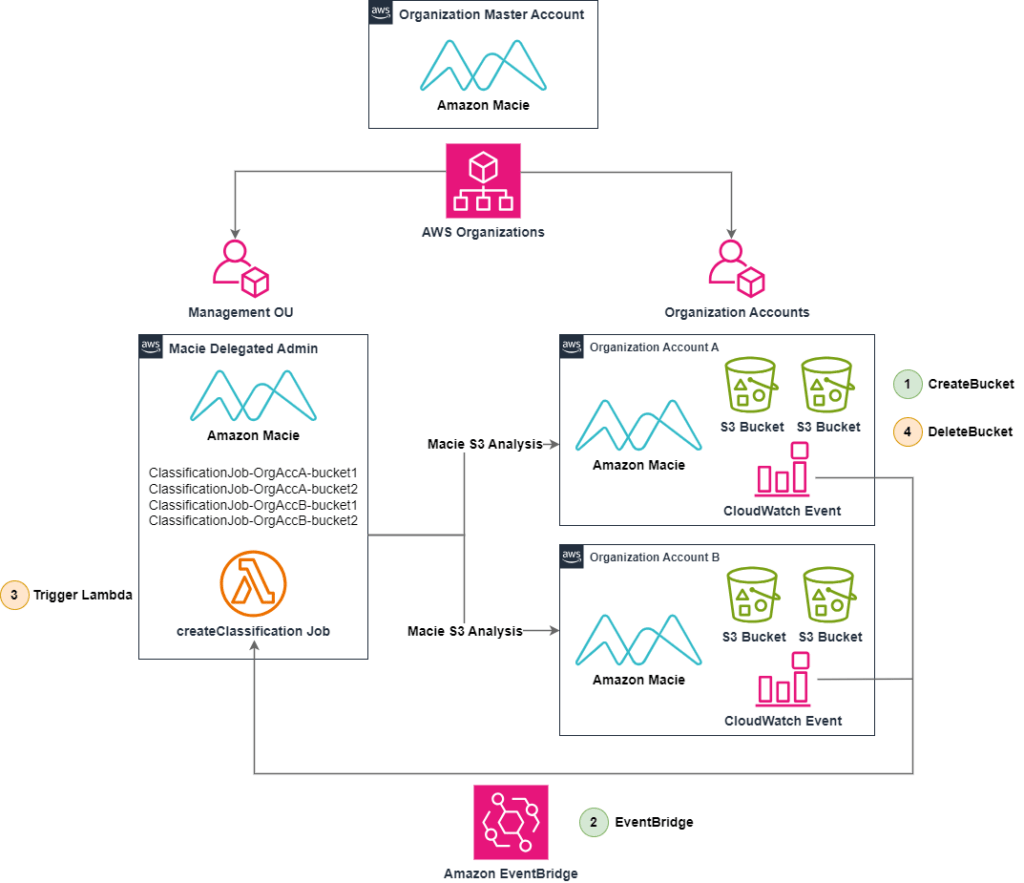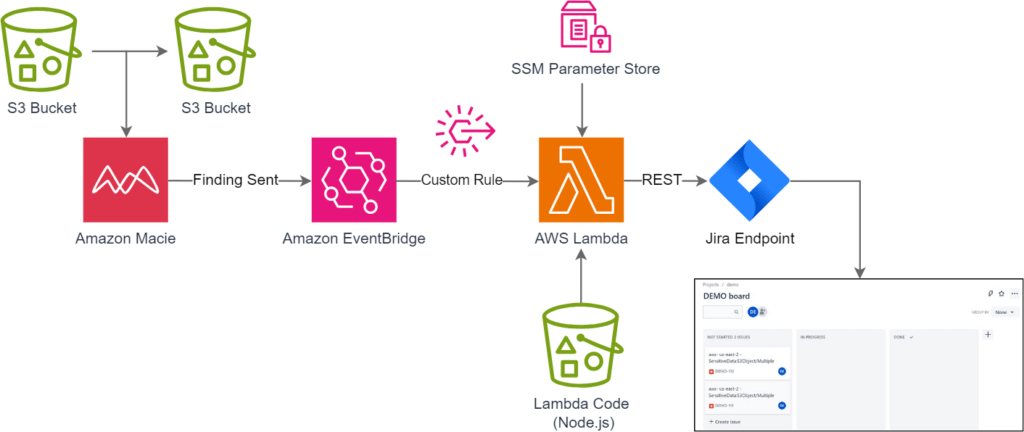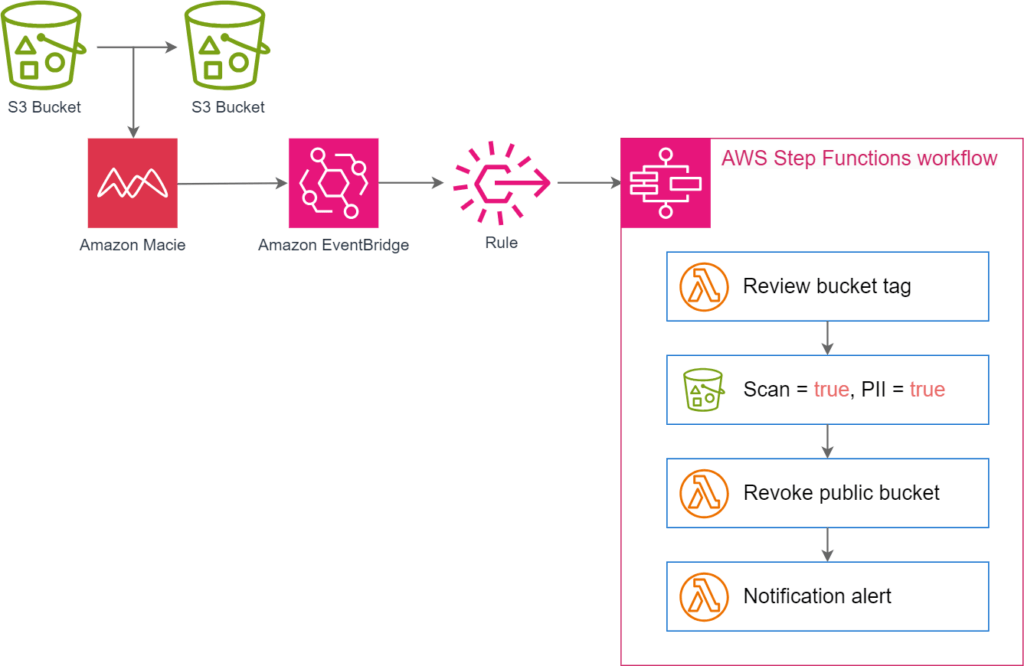With the rise of electronic medical records and connected healthcare devices, the volume and sensitivity of healthcare data are exploding. Safeguarding data such as Protected Health Information (PHI) and Personally Identifiable Information (PII) is critical to patient privacy and trust.
Fortunately, cloud-based solutions exist to fortify healthcare data security. This blog post explores how Amazon Macie, a Machine Learning (ML) service by AWS, empowers healthcare organizations to secure their data. We’ll delve into how Macie automates the discovery, classification, and protection of critical information within AWS environments, highlighting best practices for data security in healthcare settings.
Navigating Healthcare Data Threats in the Cloud
The healthcare industry faces a daunting security challenge. According to The HIPAA Journal’s report, a staggering 82.6 million healthcare records were exposed in 2023, driven primarily by insider threats and phishing attacks. These data breaches come at a steep cost, with healthcare organizations facing average financial losses nearing $10.1 million and far surpassing those of other sectors.
To counter these escalating threats in the cloud, healthcare organizations need to prioritize the adoption of modern and robust security measures. That’s where Cloudelligent comes to the rescue. Our security specialists empower you to strengthen healthcare data security by integrating Macie into your AWS environment.
Connect with us to explore tailored solutions for your organization’s safety.
Understanding Amazon Macie: Your Ally in Data Security
Healthcare IT professionals face the critical responsibility of safeguarding sensitive data while ensuring regulatory compliance. Macie serves as a crucial ally in fortifying healthcare data security through its advanced machine learning and pattern-matching capabilities.
Here’s how Macie empowers healthcare organizations:
- Healthcare Data Discovery: Automatically scans your Amazon S3 buckets to uncover, classify, and secure sensitive data such as PHI and PII.
- Holistic View of Data: Offers enhanced visibility into your data access patterns and usage.
- Regulatory Compliance: For healthcare providers, compliance with regulations such as HIPAA and HITRUST is non-negotiable. Macie ensures real-time protection and compliance for sensitive data.
- Real-time Alerts and Reporting: Provides timely notifications on potential healthcare security threats such as unauthorized access or suspicious activities.
- Automation: Macie minimizes manual intervention by automating repetitive security tasks. This enables your organization to prioritize strategic security measures over routine data audits.
Ready to enhance your cloud compliance strategy? Discover the 5 Reasons to Prioritize a Continuous Approach to Cloud Compliance and stay ahead in the ever-evolving digital landscape.
9 Best Practices for Amazon Macie Implementation in Healthcare
With its powerful data discovery and classification capabilities, AWS Macie empowers healthcare organizations to significantly bolster their cloud data security posture. However, to maximize its effectiveness, a well-defined implementation strategy is crucial.
Here are some key best practices to consider:
1. Data Security Needs Assessment
Before deploying Macie, conduct a comprehensive evaluation of your data storage practices. Identify where PHI and PII reside within your Amazon S3 buckets and understand the access controls in place. This initial assessment will help you set up your Macie configurations and ensure it focuses on the most sensitive data.
2. Define Data Classification Policies
Make sure you establish clear data classification policies to categorize sensitive data such as PHI and PII. Then, you’ll want to define criteria for data sensitivity levels and access permissions based on regulatory requirements and organizational needs.
3. Customize Macie Policies and Settings
You can take advantage of AWS Macie’s built-in capabilities for protecting healthcare data. Use pre-defined templates for PHI discovery or customize findings to match your specific data classification needs. Also, you have the option to configure Macie to prioritize findings based on the severity of potential PHI breaches.
4. Integrate With Existing Infrastructure
Don’t operate in silos. Incorporate AWS Macie with your existing security information and event management (SIEM) system. This streamlines the flow of Macie findings into your established healthcare security workflow and allows for faster incident response and investigation.

Figure 1: A Macie architecture with S3 bucket discovery and evaluation via AWS Organizations
5. Send Macie Findings to Third-Pary Systems
It’s always a good idea to integrate Macie with third-party ticketing and alerting systems such as JIRA and Slack to streamline incident response and remediation processes. This will help you automatically create tickets for identified security incidents or policy violations and timely resolution by security teams.

Figure 2: An architecture diagram showing Macie integration with third-party systems
6. Enable Automated Remediation
Leverage Macie’s automated remediation capabilities to enforce data protection policies and mitigate security risks in real-time. You can also configure automated responses to security incidents, such as blocking access to unauthorized users or triggering alerts for suspicious activities.

Figure 3: A diagram showing automated actions on Macie Findings via AWS Step Functions
7. Visualize Macie Findings for Actionable Insights
You can utilize Amazon Athena to query and analyze raw Macie findings that allow for deeper insights into AWS data security posture and potential threats. In addition, integrating Amazon QuickSight can help you create intuitive dashboards and visualizations and enable stakeholders to easily interpret and act upon the data.

Figure 4: A diagram showing how to visualize Macie findings via Amazon Athena and Amazon QuickSight
8. Staff Training
It’s best practice to regularly train your staff on cloud data security best practices and Macie’s functionalities. This empowers them to understand the importance of data protection, recognize potential threats, and contribute to a robust security culture.
9. Continuous Monitoring and Optimization
The AWS healthcare landscape and regulatory environment are constantly evolving. Regularly review your Macie configurations and findings to ensure they remain aligned with your evolving healthcare security needs. This may involve adjusting detection rules, integrating new security tools, and fine-tuning Macie’s performance for optimal PHI and PII protection.
Leverage Amazon Macie to Secure Your Healthcare Data With Cloudelligent
Enhance your healthcare organization’s security posture by teaming up with an AWS Advanced Consulting Partner such as Cloudelligent. Our experts ensure a smooth AWS journey by seamlessly integrating Macie and other cloud services to ensure HIPAA and HITRUST compliance.
Unsure where your healthcare data security stands? Reach out to us and find out with a FREE AWS Data Security Assessment.








